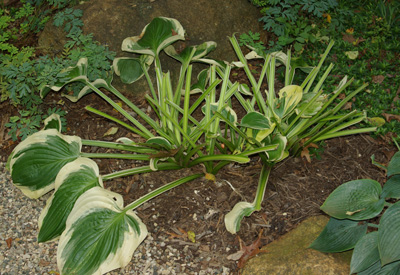How to protect your yard and garden from deer and rabbits
Smart tips for protecting your landscape and garden plants from deer and rabbit damage.

Managing deer damage
Deer are opportunistic feeders. They prefer a variety of foods, treating landscape plants as a salad bar. Often, feeding injury occurs in irregular patches and surrounding plants may be trampled. Deer do not have upper front teeth, so plants they have damaged often have a ragged appearance. Signs of injury to woody plants include frayed branch ends, development of a browse line on trees and buck rubs on trees. Buck rubs occur in fall during breeding season, usually on smooth-barked trees. Male deer regrow antlers every year. They remove the velvet from their antlers and scent-mark their territory by rubbing their antlers on trees, shredding the bark and often, if they are young trees, pushing them over.
Managing deer injury in home landscapes usually falls into the category of using plant species less-favored by deer, exclusion or repellents. For a list of plants less bothered by deer, see “Deer-Resistant Plants for Homeowners” from Michigan State University Extension. Scare devices, such as alarms and cannons, are not practical in urban areas and are generally ineffective as deer get used to them.
Fencing is probably the most effective means of managing deer damage, although it can be quite costly. If local zoning allows, electric fences are the most effective means for protecting a garden area. Perimeter fences needs to be at least 8-10 feet tall to be effective. Temporary wire or plastic enclosures around plantings can be used to protect plants over winter and vegetable gardens during the growing season.
Repellents repel by either taste or smell; some contain a mix of ingredients that provide both. Check the label to make sure what the product is labeled for. Very few are registered for use on edible plants, so read carefully. One drawback of using repellents is they will need to be reapplied periodically to be effective, and if the deer are hungry enough, they will likely eat the plants anyway.

Deer feeding damage to plants.
Managing rabbit damage
Rabbits frequently damage woody plants in winter and early spring. Damage occurs primarily within 2.5 feet of the ground, but can appear higher during the winter due to snow being piled up. Their damage is easy to recognize. Rabbits prefer thin-barked trees and shrubs and gnaw the bark in patches; branch ends and herbaceous plants and vegetables are cut cleanly with a sharp angle on the end, unlike the ragged chewing caused by deer.
Wire screen cylinders placed around trees for vole protection during winter are not high enough to prevent rabbits causing damage. Wrap branches with tree wrap up at least 5 feet to provide protection during winter. Fine-mesh chicken wire or poultry fencing can be used to protect beds and vegetable gardens. A double layer of chicken wire fastened to fence posts will make it more secure. Be sure to bend the wire down in an “L” on the outside away from the garden and bury it or secure with stakes to prevent digging.
Repellents used for rabbits have the same considerations as products used for deer. Check the repellent labels for sites and directions for use. In addition, dried blood can be effective for repelling rabbits in spring or summer, but it loses effectiveness after a rainfall and must be reapplied after it rains.



 Print
Print Email
Email